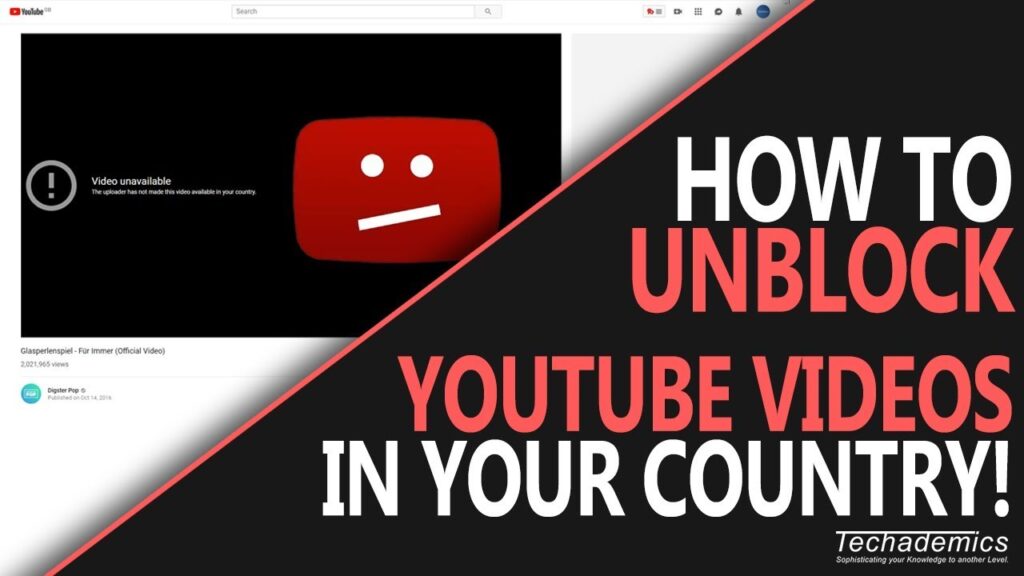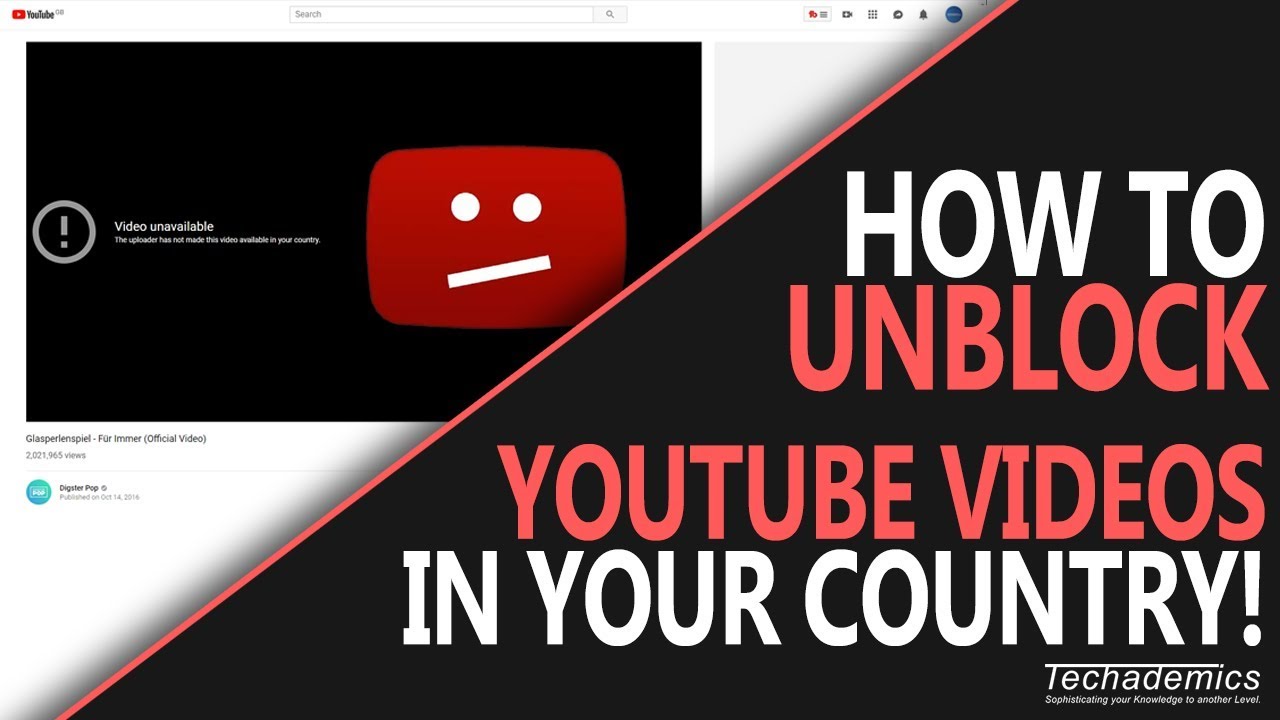
Why Are YouTube Videos Blocked? Understanding Restrictions and How to Bypass Them
YouTube, the world’s largest video-sharing platform, offers a vast library of content spanning entertainment, education, and everything in between. However, users frequently encounter situations where YouTube videos are blocked, leading to frustration and a desire to understand the reasons behind these restrictions. This article delves into the various reasons why YouTube videos are blocked, the different types of restrictions imposed, and potential methods for bypassing these blocks while emphasizing ethical and legal considerations.
Reasons Behind Blocked YouTube Videos
Several factors can contribute to a YouTube video being blocked. Understanding these reasons is crucial for both content creators and viewers.
Copyright Issues
Copyright infringement is a primary reason for YouTube videos being blocked. YouTube employs a sophisticated system called Content ID, which scans uploaded videos against a database of copyrighted material. If a video contains copyrighted content without proper authorization, the copyright holder can request its removal or monetization.
This can lead to a YouTube video being blocked globally or in specific regions. Content creators must ensure they have the necessary rights and licenses for any music, video clips, or other copyrighted material used in their videos. [See also: YouTube Copyright Strikes: What You Need to Know]
Geographic Restrictions
Content creators and distributors often impose geographic restrictions on their YouTube videos. These restrictions limit the availability of a video to specific countries or regions. Reasons for geographic restrictions include licensing agreements, distribution rights, and compliance with local laws and regulations.
For example, a movie trailer might be available in North America but blocked in Europe due to distribution agreements. Similarly, a music video might be unavailable in certain countries due to licensing restrictions imposed by record labels. Users trying to access geographically restricted YouTube videos will encounter a message indicating that the content is not available in their location.
Content Violations
YouTube has strict community guidelines that prohibit certain types of content. Videos that violate these guidelines may be blocked or removed from the platform. Prohibited content includes:
- Hate speech: Content that promotes violence or hatred based on race, ethnicity, religion, gender, sexual orientation, or other characteristics.
- Harassment and bullying: Content that targets individuals or groups with malicious intent.
- Violent or graphic content: Content that depicts extreme violence, gore, or animal abuse.
- Sexually suggestive content: Content that exploits, abuses, or endangers children or promotes sexual violence.
- Spam and deceptive practices: Content that is misleading, deceptive, or intended to scam users.
YouTube regularly reviews content and takes action against videos that violate its community guidelines. Users can also report videos that they believe violate these guidelines.
Age Restrictions
Some YouTube videos are age-restricted, meaning they are only accessible to users who are at least 18 years old and logged into their YouTube accounts. Age restrictions are typically applied to videos that contain mature themes, violence, or other content that may not be suitable for younger audiences. Users who are not logged in or do not meet the age requirements will be unable to view age-restricted YouTube videos.
Government Censorship
In some countries, governments may censor YouTube videos that they deem to be politically sensitive or harmful to public order. These governments may block access to specific videos or even the entire YouTube platform. Government censorship can significantly limit access to information and freedom of expression.
Types of Restrictions on YouTube Videos
Understanding the different types of restrictions placed on YouTube videos can help users navigate the platform and understand why certain content may be unavailable.
Global Blocks
A global block means that a YouTube video is unavailable in all countries and regions. This type of restriction is typically imposed when a video violates YouTube’s community guidelines or infringes on copyright laws. Global blocks are the most severe form of restriction and are often permanent. If a YouTube video is blocked globally, it will not be accessible to any users, regardless of their location.
Regional Blocks
Regional blocks restrict access to a YouTube video in specific countries or regions. This type of restriction is often imposed due to licensing agreements, distribution rights, or compliance with local laws and regulations. For example, a music video might be available in North America but blocked in Europe due to distribution agreements. Regional blocks can be frustrating for users who are unable to access content that is available in other parts of the world.
Age Restrictions
Age restrictions limit access to a YouTube video to users who are at least 18 years old and logged into their YouTube accounts. This type of restriction is typically applied to videos that contain mature themes, violence, or other content that may not be suitable for younger audiences. Age-restricted YouTube videos are often marked with a warning label and require users to verify their age before viewing.
Monetization Restrictions
Monetization restrictions limit the ability of content creators to earn revenue from their YouTube videos. This type of restriction is often imposed when a video contains copyrighted material or violates YouTube’s advertising policies. Monetization-restricted YouTube videos may not be eligible for ads, or the revenue generated from ads may be shared with the copyright holder. [See also: YouTube Monetization Policies: A Comprehensive Guide]
Methods for Bypassing Blocked YouTube Videos
While bypassing restrictions on YouTube videos may seem appealing, it’s important to consider the ethical and legal implications. Circumventing copyright restrictions or accessing content that violates local laws can have serious consequences. However, there are some legitimate methods for bypassing blocked YouTube videos, especially when the restrictions are not legally binding.
Using a VPN (Virtual Private Network)
A VPN is a tool that allows you to mask your IP address and appear to be browsing from a different location. By connecting to a VPN server in a country where a YouTube video is available, you can bypass geographic restrictions and access the content. VPNs are commonly used to access streaming services, social media platforms, and other websites that are blocked in certain regions. However, it’s important to choose a reputable VPN provider and be aware of the terms of service of both the VPN and YouTube.
Using a Proxy Server
A proxy server acts as an intermediary between your computer and the internet. When you use a proxy server, your internet traffic is routed through the proxy server, which masks your IP address and makes it appear as if you are browsing from a different location. Proxy servers can be used to bypass geographic restrictions on YouTube videos, but they are often less secure and reliable than VPNs. It’s important to choose a reputable proxy server and be aware of the risks involved.
Using YouTube Unblocker Websites
Several websites offer YouTube unblocker services that allow you to watch blocked YouTube videos without using a VPN or proxy server. These websites typically work by downloading the video from YouTube and hosting it on their own servers. While YouTube unblocker websites can be convenient, they are often unreliable and may contain malware or other security threats. It’s important to exercise caution when using these websites and avoid entering any personal information.
Downloading the Video
If you have the legal right to access a YouTube video but are unable to stream it due to geographic restrictions or other technical issues, you may be able to download the video for offline viewing. Several websites and browser extensions allow you to download YouTube videos, but it’s important to ensure that you have the necessary permissions to do so. Downloading copyrighted content without authorization is illegal and can have serious consequences.
Ethical and Legal Considerations
While bypassing restrictions on YouTube videos may be technically possible, it’s important to consider the ethical and legal implications. Circumventing copyright restrictions or accessing content that violates local laws can have serious consequences. Before attempting to bypass any restrictions on YouTube videos, ask yourself the following questions:
- Do I have the legal right to access this content?
- Am I violating any copyright laws or licensing agreements?
- Am I circumventing any government regulations or censorship policies?
- Am I putting myself at risk of legal or financial penalties?
If you are unsure about the legality or ethics of bypassing restrictions on a YouTube video, it’s best to err on the side of caution and avoid doing so. Respect the rights of content creators and distributors, and comply with all applicable laws and regulations.
Conclusion
YouTube videos are blocked for a variety of reasons, including copyright issues, geographic restrictions, content violations, age restrictions, and government censorship. Understanding these reasons is crucial for both content creators and viewers. While there are methods for bypassing these restrictions, it’s important to consider the ethical and legal implications before doing so. Respect the rights of content creators and distributors, and comply with all applicable laws and regulations. By doing so, you can enjoy YouTube’s vast library of content responsibly and ethically.

